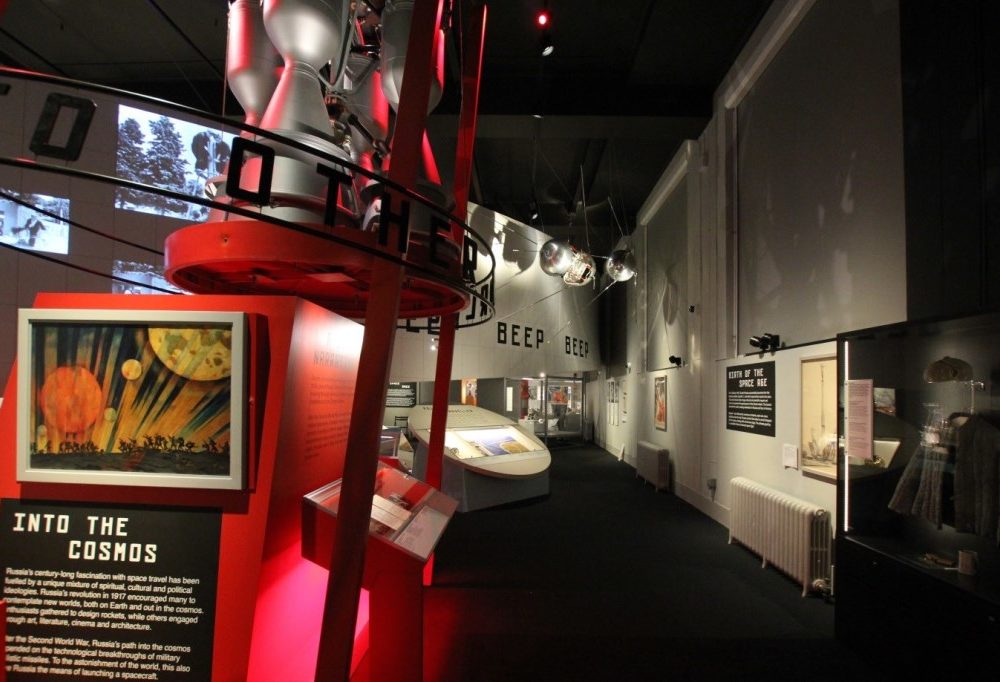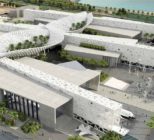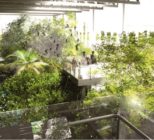The Hub was formed in in 2005 when founding directors, Phil Wooderson and Richard Coughlin, identified that there was a limited number of high quality specialist fit-out contractors dedicated to the museums, heritage and arts sector and another was needed.
Based in Redditch just south of Birmingham, from where it services all of its projects, the company have the latest machining and finishing facilities and skilled operatives in our workshop. It has a specialised team that covers estimating, project and cost management, design development, setting out and site management.
The highlights are too numerous to mention but our work on blockbuster exhibitions such as “David Bowie Is” at the V&A and “Cosmonauts; Birth of the Space Age” at the Science Museum have been exciting to work on.
“Our principle is simple; we have built sustainable relationships with clients and professional teams throughout the UK, Europe and the Middle East by delivering high quality projects in a collaborative and non-confrontational manner,” says Director Dominic Sore. “Many of the professional teams that we work with undertake international projects and their experience of working with us has given them the confidence to introduce us to their prestigious projects with overseas clients.”
The Hub are in the final stages of delivering the Museum of Arabic Science at the Sheikh Abdullah Al Salem Cultural Centre (SAASCC) in Kuwait. This 2,000 sq m exhibition has required The Hub to deliver all elements of the exhibition from contractor design to researching and procuring many of the objects. There have been numerous challenges to overcome on this prestigious project including the manufacture and installation of five scale models of world famous mosques suspended at high level above a 70sqm map of the world.

“To achieve this we take time to understand the client and professional team’s requirements and have built a network of high quality specialist sub-contractors who we work closely with throughout the project process to deliver those requirements. Projects are organised by following sector relevant project phases.”
The brief was very much design intent that The Hub worked closely with the exhibition designers, to develop, identifying work packages and suitable contractors to undertake those packages. “Quality is a priority and the process of gaining approvals has been critical to the ongoing quality assurance process that was instigated across the project. We were invited to submit prices and supporting documentation by the construction managers, initially prices were provided against design intent and then over an 18 month process the designs were developed and the prices negotiated to reach a guaranteed maximum price.”
Sore says there are all sorts of contractual challenges, financial and organisational structures required dependent on the location of the project, but once the company’s Commercial Director has resolved those it’s all about programming, logistics and meeting local statutory requirements. “Of course we deal with all of these items in the UK but the programme and logistics is critical to ensure that everything is where it should be, when we say it will be, to maintain programme.”

The main difference between international projects and those in the UK is scale, particularly when working in the Middle East. While the work packages are the same, says Sore, the scale of them increases; bigger display cases, more audio visual and the highest quality of finishes that ordinarily clients in the UK may shy away from to focus on content.
The Hub says that in the UK museums really engage with the people involved with the stories that are being told, with public engagement and community consultation driving the final outcome of the exhibition, whereas some international projects just want to tell a story as described to them based on historical fact and the interpretative approach to the project.
“We take most pride though in projects were we get to tell stories that are important to tell. At this time it is primarily military based projects, due in part because many of the heroes of those stories are no longer with us or have little time left. This has included the restoration projects at Bletchley Park, “First World War in the Air” at RAF Hendon “HMS Caroline” in Belfast, commemorating the Centenary of the Battle of Jutland and currently the National Army Museum and the International Bomber Command Centre in Lincoln.”

The Hub has invested a lot of time in considering its off site and on site construction methods and techniques to ensure that it minimises the amount of “air” it ships and that the process of assembly on site is clear for local operatives under The Hub’s own site manager’s direction to complete.
“Fit out is there to provide a structure or enhance the presentation on which the theme of the exhibition is supported. It is therefore critical to deliver high quality fit out that does not steal the show but enhances the visitor’s experience,” he says. “With live and future opportunities in Europe, Saudi and Kuwait the highlights keep coming and that keeps The Hub continually developing and investing for the future.”
Sore says, as The Hub is a sector leaders that works with world recognised brands such as the V&A, Science Museum, Tate and the Royal Shakespeare Company, its clients want the best, not only from The Hub as the main contractor, but also our specialist sub-contractors that we use.
“The benefit is that it gives a level of confidence to clients and professional teams that, as a company, The Hub has the experience to delver high quality projects regardless of location. We say that because the process from start to finish is no different.”
The Hub works on a variety of projects including temporary and permanent installations and we only take on projects that we know we can correctly resource. This means that at any one time there are eight to 10 live projects at various phases going through The Hub and these can take anything from four weeks to 18 months to complete.









